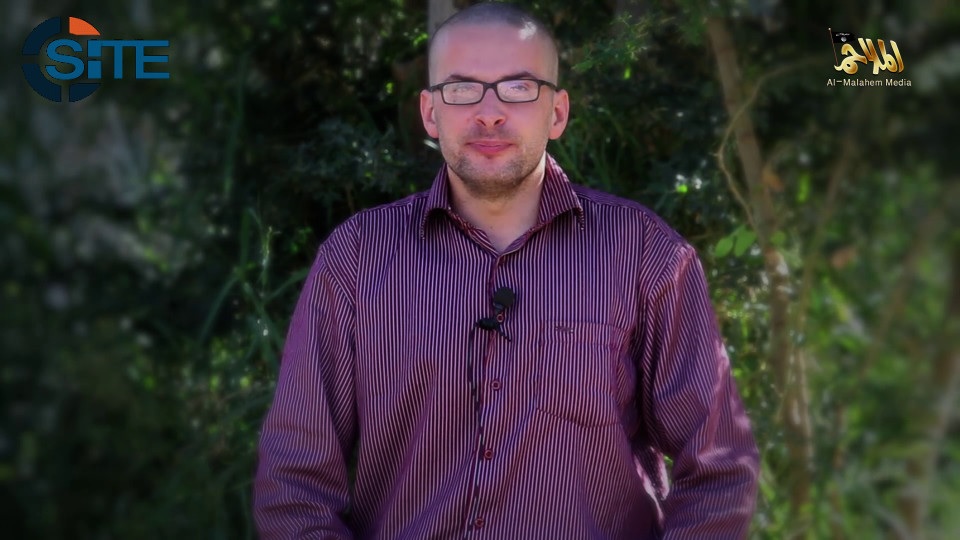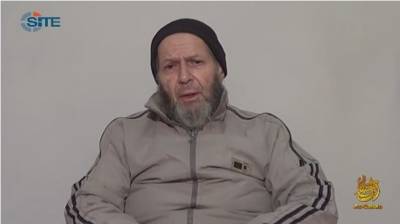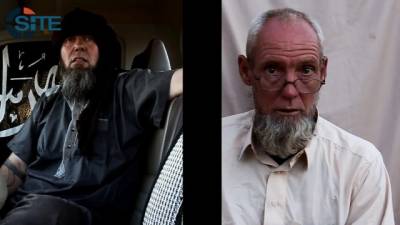Luke Somers and the Transformed Business of Hostage-Taking

On December 3, 2014, SITE Intelligence Group released a video from al-Qaeda in the Arabian Peninsula (AQAP), showing a hostage identifying as a British-American citizen named Luke Somers, calmly but sincerely pleading for his life. Before Somers’s plea, AQAP official Nasser bin Ali al-Ansi discusses American foreign policy in Muslim countries, including Yemen, and claims that Somers will suffer an “inevitable fate” if the U.S. does not meet the group’s demands (not specified in the video) in three days.
Later in the video, Somers appears and states:
It's now been well over a year since I've been kidnapped in Sana'a. Basically, I'm looking for any help that can get me out of this situation. I'm certain that my life is in danger. So as I sit here now, I ask if anything can be done, please let it be done. Thank you very much.
While the world has taken in numerous videos containing ransom demands and subsequent executions from jihadist groups in the past year—most notably those from the Islamic State (IS)—this video from AQAP demonstrates something entirely new from the group. Until this video, AQAP has never made a publicized claim of American or Western kidnappings. It begs the question: What has prompted this change in the group’s tactics?
Statements from AQAP’s affiliates and other jihadist groups suggest a new wave of confidence in the benefits yielded from hostages following the U.S. government’s exchange of five Taliban officials from Guantanamo Bay Prison for U.S. soldier Bowe Bergdahl in May of 2014. After the exchange, jihadists around the world celebrated the event as a success of jihad. A day after the exchange, on June 1, Afghan Taliban leader Mullah Omar congratulated the group in a released statement, which claims:
This great success and conquest requires all mujahideen to supplicate in thanks to Allah for having made the sacrifices of our people have a clear effect, and empowered our mujahideen to survive from the claws of the enemy.
The negotiation with a terrorist organization—the Taliban in this case—and the exchange for the release of the five Taliban dangerous leaders, opened a new era for al-Qaeda (AQ) and other jihadi groups in regard to American hostages. For jihadists, the statement “We don't negotiate with terrorists” was no longer valid.
Inspired by this exchange, in August of 2014, roughly two months after the Bergdahl prisoner swap, AQ released a message regarding former American United States Agency for International Development (USAID) worker Warren Weinstein, who was kidnapped in Pakistan three years prior. The message insists:
We are not interested in retaining the prisoner in our protection; we are only seeking to exchange him in return for the fulfilment of our demands that we have conveyed.

The AQ message asked for similar conditions like those of the Taliban. Among the demands were the release of the Omar Abdul Rahman (commonly referred to as the "Blind Sheikh"), Ramzi Yousef, and Sayyid Nosair, who were convicted in the 1993 World Trade Center bombing.
Even worse, this American prisoner exchange was used by hostages as model for other countries to follow. A November 17, 2014 release by the Sahara division of al-Qaeda in the Islamic Maghreb (AQIM), for instance, shows two captives by the group: one Dutch and one French. In both of their testimonies, the hostages appeal to their governments by citing the American exchange for Bowe Bergdahl, framing the swap as validation for government-terrorist hostage exchanges.

The French hostage, Serge Lazaervic, pleads for his priority to President Francois Holland, stating, “Obama liberated the only American soldier in exchange for five Taliban leaders. The Dutch captive, Sjaak Rijke, similarly states, “…until now, I've not received anything official with respect to the negotiations while at the same time we see that the American government released five Taliban captives to get one American rescued, captive returned.”
The Bergdahl swap has even been used by the Islamic State (IS) as a means to criticized failed U.S. rescue operations for IS prisoners. In the November 21, 2014 release of the sixth installment of “Lend Me Your Ears,” wherein British prisoner John Cantlie discusses news and events pertaining to IS, the captive takes a hard jab at the U.S. government for not meeting the group’s demands for releasing him and his fellow prisoners, stating:
[The prisoners exchanged for Bergdahl] were the hardest of the hardcore, according to John McCain. But Obama wanted the exchange, and five years after Bergdahl was taken, he got it, on June 1st of this year. Bergdahl was released. He was one man. We were six. And the Islamic State asked for Muslim prisoners in exchange for all of us. Yes, Bergdahl was a soldier and three of us were British. But is a civilian life or six of them really not worth discussing?
The list of jihadist appeals to the Bergdahl swap can go on, but to better understand how this story has contributed to AQAP’s release of the Somers video, we must first understand the “emboldening” element of the swap. Beyond the more obvious and widely discussed element of elevating terrorist demands to a legitimate level, swapping Bergdahl for the five Taliban members gave an argumentative boost to terrorists to persuade the greater public—and thus policy makers and officials—to rescue the victims.
This is a dangerously powerful question that terrorists can now force through the words of their prisoners, essentially asking, Why him and not me?
Note the aforementioned commentary by Cantlie, wherein he frames the U.S. refusal to meet IS’s demands as hypocritical, stating of himself and the remaining prisoners, “[Bergdahl] was one man. We were six.” This is a dangerously powerful question that terrorists can now force through the words of their prisoners, essentially asking, Why him and not me?
Now, in the case of Somers, the U.S. government faces not only pressure by these hostages and their families, but also from the greater public—the anger of which can now be further exacerbated by groups like AQAP and IS.
While governments’ back-room negotiations with terrorists is nothing new, the Bergdahl swap, in its overwhelming publicity and disproportionate 5-1 prisoner trade, has and will continue to be celebrated as a boost to jihadists’ demand tactics regarding hostages. Regardless of whether it was the right or wrong thing to do, the Bergdahl swap opened a Pandora’s Box for other terrorist groups, shooting a boost of adrenaline into what was already a grimly thriving hostage market. That being said, unfortunately, we can expect to see more videos like that of Somers.
Meanwhile, with their demand deadline set at December 6, AQAP’s warning about Somers lingers:
…we give the American government a timeframe of three days from the issuance of this statement to meet our demands about which they are aware; otherwise, the American hostage held by us will meet his inevitable fate.
